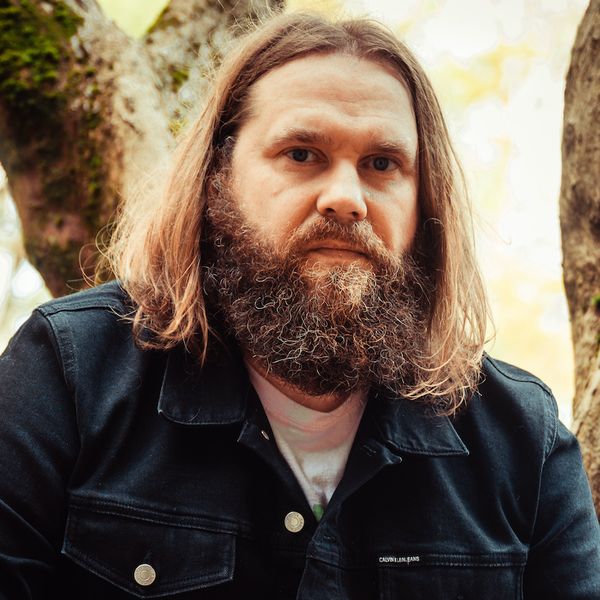




Link copied

It's only in recent years that North Carolina-born and New York-based musician Gregory Dwane has donned the mantle 'singer/songwriter'.
Before that, his long career in music included playing in punk bands in the 90s, working as a touring music tech for artists like Alanis Morissette and Dave Navarro, producing Indigo Girls' Amy Ray and writing jingles.
In that time, Dwane got sober, became a father, and experienced burnout so acutely that he left the music industry behind and began painting. He even opened a gallery in Brooklyn.
But as it turns out, music wasn't done with him yet. It was only in the ensuing silence brought on by the pandemic that he tapped more deeply into songwriting and channeled a lifetime's worth of experiences.
Dwane recently released his self-titled debut album, which bridges southern-tinged alt-country with a hard-edged Americana. Ahead of the release, he premiered one of his new singles with Holler; 'Gone and Changed' features Indigo Girls' Amy Ray and details what happens when your feelings for another person change.
On another single, 'Growing Up', he opens up about raising his son and the memories it generates about himself at that age.
Dwane spoke with Holler about growing up in North Carolina, what it was like taking a break from the music industry and what he has planned next.
Where are you from and how has that influenced the type of artist you are?
I grew up in Trinity, North Carolina. Honestly, I couldn’t wait to get out of there. I think that’s how it influenced me — I wanted to make music and there simply wasn’t a music scene there. I had to drive to the nearest city, Greensboro, to find like-minded creatives.
I knew I would need to move to a bigger city to make records. But the other side is growing up in the south (my dad’s side of the family is from near Pigeon Forge, Tennessee), there are experiences and stories and music that are unique to the region. They come out in my writing all the time.
What did you listen to growing up?
Everything. My first records were Kenny Rogers' Greatest Hits and Willie Nelson’s Stardust. But it wasn't long before I was moon walking and wanted to be Michael Jackson. I grew up on MTV.
My first concert was Run DMC. When I was 12, I had two turntables from RadioShack (RIP) and the only a cappella I could find in my records to mix or scratch was the opening line to Johnny Paycheck’s 'Take This Job and Shove It'. I was mixing Run DMC instrumentals and Johnny Paycheck, ha!
By the time I was 15, I was playing drums in a punk band. I would try to see every show that came through town or anywhere reasonably nearby. Dwight Yoakam, Parliament Funkadelic, Prince, REM — I was always drawn to good songwriting. I didn’t care about the genre.
You previously worked as a music tech and a jingle writer. How did those experiences shape your approach to the craft of music?
Being a tech was a fun job and I mostly worked with great people; however, if I'm being honest, it was sometimes frustrating when I would think, 'Hey, I want to be the guy on stage playing guitar'.
I learned SO much writing music for advertising; I basically wrote a song a day for 15 years. It forced me to learn how to get to work and write and not wait around for the muse to come and visit me. I had to make decisions and go with it. I also got pretty good at recording and mixing.
You walked away from the music industry and focused on painting for a time. What did that creative pursuit offer you?
Painting changed my life. I had burnt out working in advertising and I needed something else that was creative and not tied to my income. I went full bore: I went back to school; I took classes; I read everything I could on the history of painting; I learned about process.
The painting that I enjoy doing is all about process: making studies, not being afraid to make mistakes and realizing that often the mistakes are the most interesting part. Out of that, I began to apply that freedom and process to my songwriting. I realized my song demos didn’t need to be perfect.
The big picture sketch of the song was much more important to have in place than the minutiae of every word or note being perfect. The next day I may start over and remake the entire demo — different tempo, different key. It may seem obvious to some, but not me!
Do you still plan to paint in addition to recording and releasing music?
Honestly, I haven’t really. I still have my gallery and show other artists, which I love doing and being a part of that community. But, I started this record two years ago and I made a promise to myself that I was going to focus and give it everything I had.
Putting out a record independently is basically running a small business and I wear all of the hats: mailroom, customer service, art design, radio promotion, PR, band leader, booking agent, A&R, producer…you get the idea. I’m busy!
Who would be your dream collaboration?
Lucinda Williams. She is a huge influence both lyrically and in her vocal delivery. Car Wheels on a Gravel Road is a really important record to me.
What’s next?
I had two goals when I started this. I hope to open doors to tour and support other artists, and I want to play festivals in 2022. I also want to get into writing rooms in Nashville. I haven’t achieved that yet. Other than that, I am already writing the next record!
Gregory Dwane's self-titled record is out now via Peacedale Records





